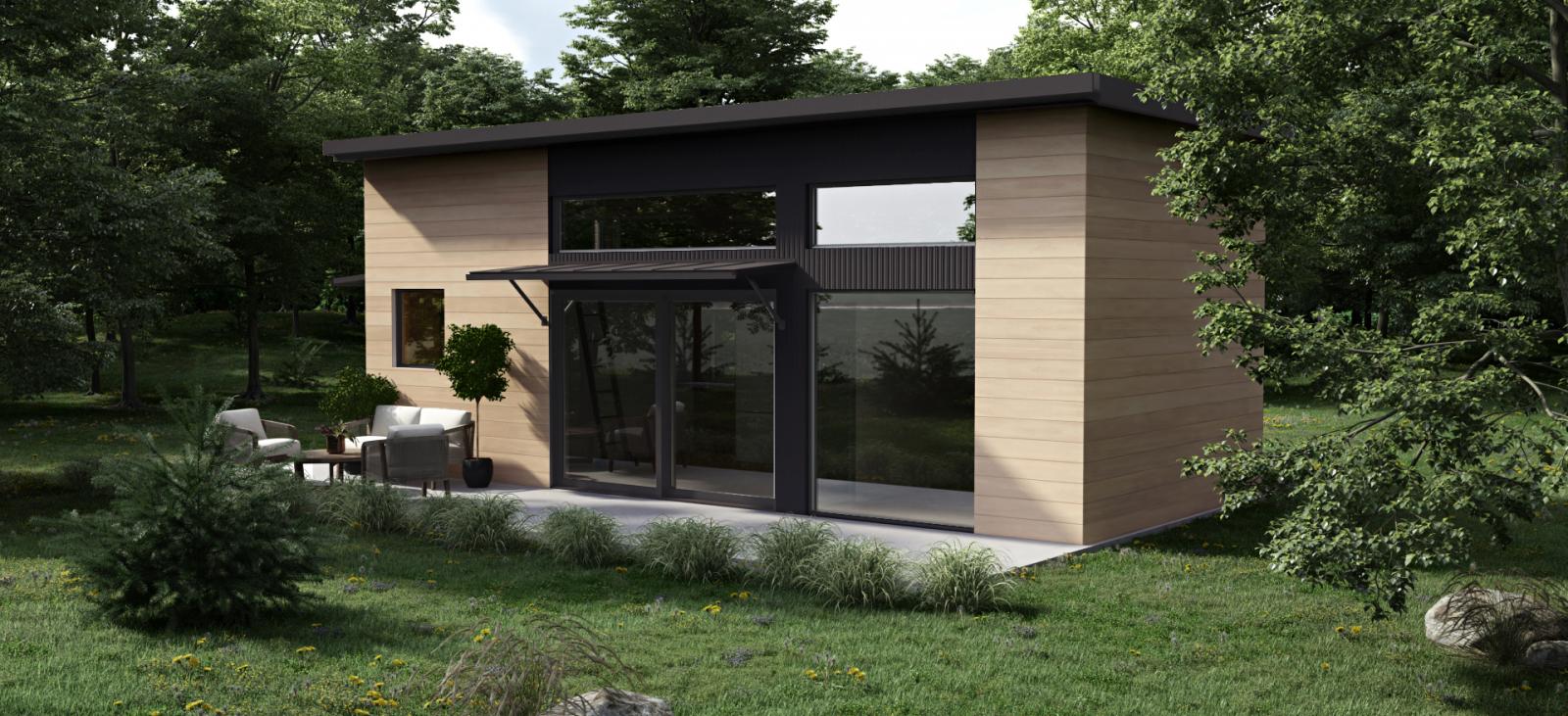Home Building Curiosities: Dvele
Dear Readers,
I would like to introduce you to our next Home Building Curiosity, Dvele. Founded by two brothers, Kurt and Kris Goodjohn, Dvele creates prefabricated, net-zero ready, Passive House certified, homes! They are based in California, and maintain their mission to “…offer a wide-array of customizable, modern pre-fab homes that verifiably exceed all standards of quality and efficiency.” William and I are admittedly a little jealous that such young people are already achieving modular sustainable homes, but we are also incredibly excited that there are like-minded individuals that feel so compelled to change traditional home building into a holistically healthy endeavor- for the planet, and its people.
As we delve into Dvele, I shall be going through our curiosities according to my and William’s five main principles: Passive House, Net Zero, Prefabrication, Small Footprint, and Healthy Living.
Baldwin Mini Home, Credit: Dvele
Passive House
Dvele adheres to the Passive House Institute of the United States (PHIUS) standards in the design and construction of all of their homes. This allows their Dvele homes to use “65%-75% less energy than a standard home,” as well as preempt their homes to be net-zero ready.
Net Zero
Every Dvele home comes wired for solar panels not just because they are based out of California (where solar panels are now a requirement within state building code), but because it makes sense for the homes they build. Their homes all meet Passive House standards, which means that they require little energy to function in the first place. Combine an already highly efficient house with a sunny patch of land and a few solar panels…and BAM! Not only ‘net zero,’ but ‘net positive.’
While every home comes wired for solar panels to eventually be installed, their ‘upgraded’ Dvele homes can include installed solar panels and a battery backup.
Prefabricated
By Dvele prefabricating their homes, they can ensure consistent building conditions, as well as efficiency in materials and time. Looking at their timeline, it takes them about 20 to 32 days to actually build the home in the factory. Prior to actively building the home, they spend about 10 weeks assessing and surveying the intended location of the home, laying the foundation, acquiring the necessary building permits, and securing materials.
Once the home is built, it takes about a week to ship, and then another 2 to 6 weeks to install the home on site. Overall, after ordering the home, they estimate about 6 months until it is ‘move-in ready.’
The cost? About $200 per square foot to $275 per square foot. Their least expensive models are the mini homes; they are 430 square feet and priced at $190,000. Their most expensive model is the “Elsinore,” 2,872 square feet for $646,000.
Small Footprint
For every Dvele home completed, Dvele promises to plant 10,000 trees! Where, I am not sure. Something to ask them!
They also “…test and source both materials and partners that voluntarily disclose the chemicals, processes, and toxicity testing results of their products….” Which in turn, promotes sustainability and transparency across the building market as a whole…which is wonderful. Advocating for healthy materials and environmentally friendly business ethics creates a ripple effect across society- thereby raising the bar for all architecture.
One aspect that we wish to do a tad differently, is to offer composting toilets and rainwater collection systems with our homes. That way, utility hook up will be removed from the equation in home installation, as well as the necessity to tap into groundwater or connect oneself to the grid.
We also wish to avoid the intrusive process of digging a foundation by using a pin system. Our hope is that this system will prevent disruption to natural groundwater flows, root systems, and soil layers.
Healthy Living
Dvele homes are abundant with natural light. In the design of their homes they use “double-or-triple-paned glass walls in the main living area with lift-and-slide doors” and “European-style tilt-and-turn windows with steel reinforcing that allow for larger-sized operable windows.” First off, yes, I said ‘glass walls’ which are ‘double or triple pane.’ Which is perfect for a home meeting Passive House standards and simultaneously connecting its inhabitants to the outside world.
Given that their homes are passive homes, they of course have incredibly well-sealed, well-insulated walls. If built correctly, moisture should not be a problem. However, for peace of mind for the inhabitants (and this is something I would personally enjoy having in my own passive home), Dvele “offer(s) in-wall detectors to alert the homeowner as soon as possible in order to avoid mold growth which compromises air quality and the integrity of the homes structural components.” They are able to do this fancy technological thing through the integration of artificial intelligence throughout functional aspects of the home: such as monitoring the indoor air quality, sensing for moisture build up and temperature changes.
In Conclusion…
Devele is yet another home building curiosity due to their efficient prefabrication of Passive House, net-zero ready, environmentally conscious homes. William and I are excited to see how they progress and possibly expand, and wish these fellow sustainable home-building advocates all the best!
Sincerely,
Shelby Aldrich
Dvele. “Prefab Home FAQs- The Modular Home Construction Building Process,” 2019. https://www.dvele.com/frequently-asked-questions. Accessed on 12 March, 2020.
Dvele. “Peace of Mind- On Every Level,” 2019. https://www.dvele.com/peace-mind. Accessed on 12 March, 2020.
© 2020 Sustaining Tree
© 2020 Sustaining Tree


0 Comments